
A great hall is the main room of a royal palace, castle or a large manor house or hall house in the Middle Ages, and continued to be built in the country houses of the 16th and early 17th centuries, although by then the family used the great chamber for eating and relaxing. At that time the word "great" simply meant big and had not acquired its modern connotations of excellence. In the medieval period, the room would simply have been referred to as the "hall" unless the building also had a secondary hall, but the term "great hall" has been predominant for surviving rooms of this type for several centuries, to distinguish them from the different type of hall found in post-medieval houses. Great halls were found especially in France, England and Scotland, but similar rooms were also found in some other European countries.

Capesthorne Hall is a country house near the village of Siddington, Cheshire, England. The house and its private chapel were built in the early 18th century, replacing an earlier hall and chapel nearby. They were built to Neoclassical designs by William Smith and (probably) his son Francis. Later in the 18th century, the house was extended by the addition of an orangery and a drawing room. In the 1830s the house was remodelled by Edward Blore; the work included the addition of an extension and a frontage in Jacobean style, and joining the central block to the service wings. In about 1837 the orangery was replaced by a large conservatory designed by Joseph Paxton. In 1861 the main part of the house was virtually destroyed by fire. It was rebuilt by Anthony Salvin, who generally followed Blore's designs but made modifications to the front, rebuilt the back of the house in Jacobean style, and altered the interior. There were further alterations later in the 19th century, including remodelling of the Saloon. During the Second World War the hall was used by the Red Cross, but subsequent deterioration prompted a restoration.

The Bar Convent Living Heritage Centre, at Micklegate Bar, York, England, established in 1686, is the oldest surviving Catholic convent in the British Isles. The laws of England at this time prohibited the foundation of Catholic convents and as a result of this, the convent was both established and operated in secret.
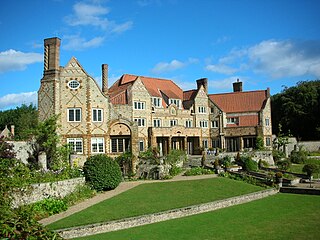
Home Place, also called Voewood, is an Arts and Crafts style house in High Kelling, near Holt, Norfolk, England, designed (1903–5) by Edward Schroeder Prior. It is a Grade II* listed building. The gardens, also designed by Prior, are Grade II* listed in the National Register of Historic Parks and Gardens.

Peover Hall is a country house in the civil parish of Peover Superior, commonly known as Over Peover, Cheshire, England. It is recorded in the National Heritage List for England as a designated Grade II* listed building.

The hall house is a type of vernacular house traditional in many parts of England, Wales, Ireland and lowland Scotland, as well as northern Europe, during the Middle Ages, centring on a hall. Usually timber-framed, some high status examples were built in stone.

Mansion House is a prominent and historically significant Grade II* listed Georgian village property in Hurstpierpoint, West Sussex, England. The substantial family home is situated in the heart of Hurstpierpoint with the High Street at the front and South Downs to the rear. The brick-faced, timber-framed building has surviving medieval sections dating back to the mid- to late 16th century.

Ince Blundell Hall is a former country house near the village of Ince Blundell, in the Metropolitan Borough of Sefton, Merseyside, England. It was built between 1720 and 1750 for Robert Blundell, the lord of the manor, and was designed by Henry Sephton, a local mason-architect. Robert's son, Henry, was a collector of paintings and antiquities, and he built impressive structures in the grounds of the hall in which to house them. In the 19th century the estate passed to the Weld family. Thomas Weld Blundell modernised and expanded the house, and built an adjoining chapel. In the 1960s the house and estate were sold again, and have since been run as a nursing home by the Canonesses of St. Augustine of the Mercy of Jesus.

Holy Trinity Rectory is a heritage-listed Anglican clergy house at 141 Brookes Street, Fortitude Valley, City of Brisbane, Queensland, Australia. It was designed by Francis Drummond Greville Stanley and built in 1889 by James Robinson. It was added to the Queensland Heritage Register on 21 October 1992.

Holy Trinity Church, Micklegate, York is a Grade I listed parish church in the Church of England in York.

St Martin-cum-Gregory's Church is a Grade I listed former parish church in the Church of England in York.
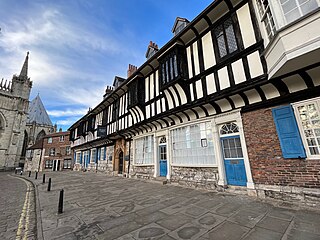
St William's College is a Mediaeval building in York in England, originally built to provide accommodation for priests attached to chantry chapels at nearby York Minster. It is a Grade I listed building.
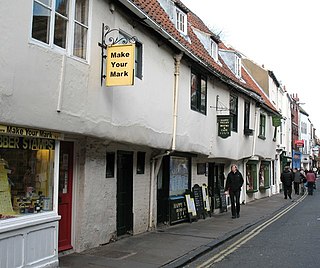
Lady Row, also known as Our Lady's Row, is a mediaeval Grade I listed building on Goodramgate in York, England. Historic England describe the structure as "some of the earliest urban vernacular building surviving in England".

Maryborough Post Office is a heritage-listed post office at 69 Clarendon Street, Maryborough, Victoria, Australia. It was designed by John Hudson Marsden and built in 1876-77, with the clock tower added in 1879. It was originally built as a combined court house, post and telegraph office and Colonial office, though the post office alone has occupied the building since 1892. It was added to the Australian Commonwealth Heritage List on 8 November 2011.

Stawell Post Office is a heritage-listed post office at 87-89 Gold Reef Mall, Stawell, Victoria, Australia. It was designed by Alfred T. Snow of the colonial Department of Public Works and built by Thomas Walker in 1874–75. It was added to the Australian Commonwealth Heritage List on 22 June 2004.
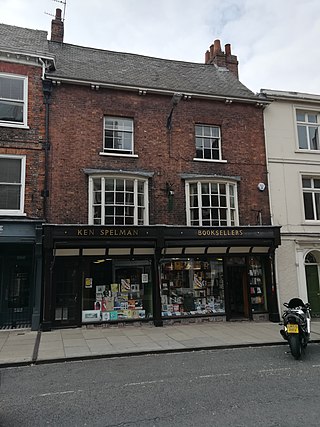
70 and 72 Micklegate is a shop in the city centre of York, in England.
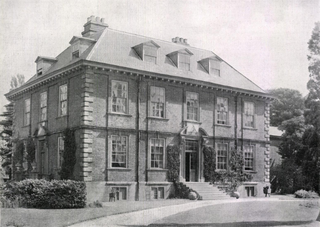
Bell Hall is a grade I listed building, in Naburn, in the rural southern part of the city of York, in England.
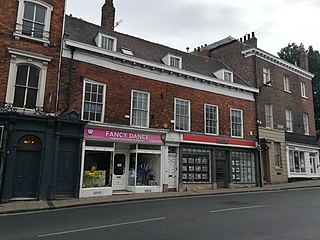
33–37 Micklegate is a historic building in the city centre of York, in England.

19 and 21 Micklegate is a historic building in the city centre of York, in England.

Kilnsey Old Hall is a historic building in Kilnsey, a village in North Yorkshire, in England.





















